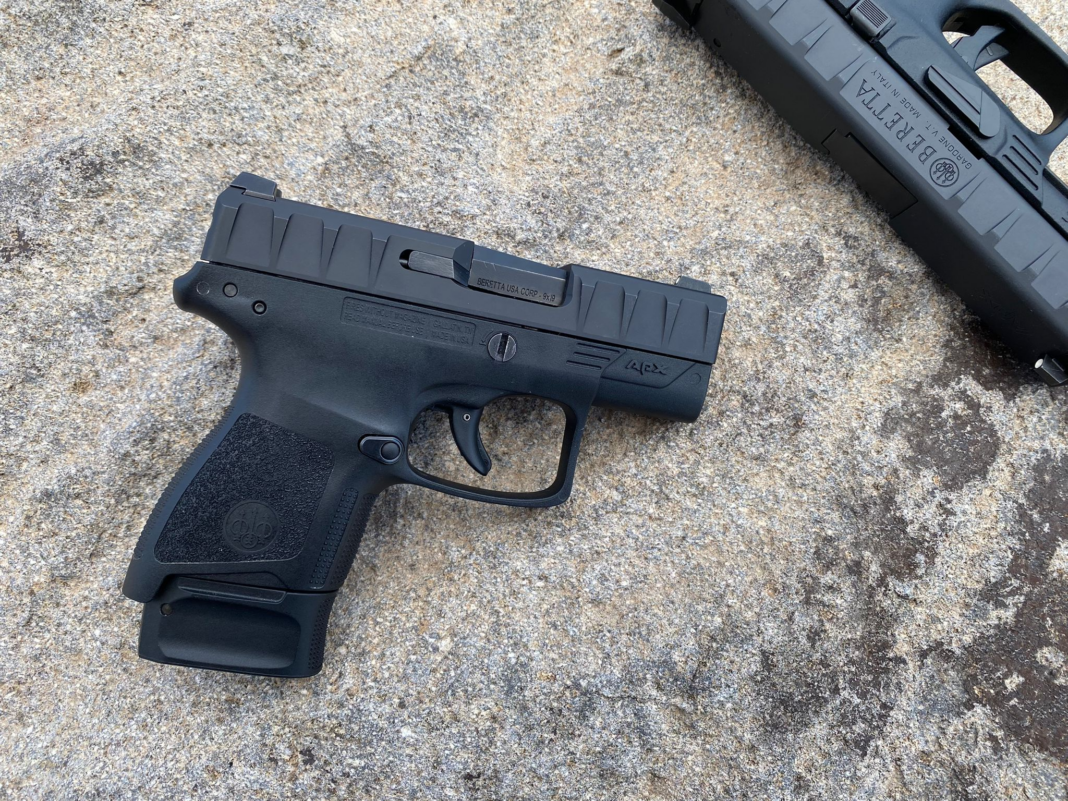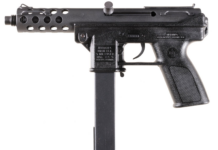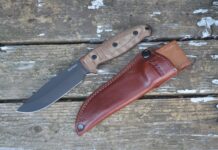The first generation Beretta APX Carry is a single-stack striker-fired polymer-framed ultra-compact pistol chambered for 9mm Luger with a three-inch barrel. It uses the same (scaled down) action and design cues as its bigger counterpart, the first-generation duty-sized 9mm Luger Beretta APX.
Like its bigger brother, the Beretta APX Carry also has those unique evenly-spaced protruding ribs throughout its slide. This slide serration arrangement is perhaps this handgun’s most distinctive feature—physically and visually. Although they worked quite well, these ribs were phased out for the second-generation of the APX family. In addition to being the dedicated go-to ultra-compact option inside the APX family, the original Beretta APX Carry is also the older Beretta Nano’s successor.
These days, the original APX Carry has been supplanted by the APX A1 Carry, but both are fundamentally similar. However, there are some tweaks and cosmetic differences between the two, namely the omission of the “original” slide ribs and the addition of an optics-ready slide. The trigger on the A1 Carry is also said to have a shorter and lighter length of pull. To be clear, this write-up is about the original APX Carry.
As a writer, I cover all manner of handguns that sell across different price points. I can’t help but notice that APX pistols appear to be some of the most competitively priced striker options currently available in the US Market. Especially considering that Beretta is a major and storied gun manufacturer.
I originally came across the APX Carry by chance after a close family member impulse-bought one for approximately $350 retail in early 2021. I never paid it too much mind, but after plinking with it this morning, I took a more critical look at it.
Beretta APX Carry First Impressions
I don’t hide the fact that I’m not necessarily the biggest fan of “slimline” handguns in general, but they’re present in the environment and are worth discussing. Despite their shortcomings, their form factors and ease of carry are undeniable. Overall, the Beretta APX Carry is a decent pistol with a great fit and finish. For its price point, it doesn’t feel cheap either.
Though this particular specimen doesn’t get shot extensively, it has been nothing but reliable since it entered the family. It has cycled a myriad of factory 115-grain and 124-grain loads, including CCI, Winchester, and Fiocchi. Moreover, the gun hasn’t had any issue cycling my subsonic 147-grain handloads consisting of a 147-gr plated Xtreme bullet over 3.3 grains of HP-38. I estimate its lifetime round count to be conservatively around 300 rounds.
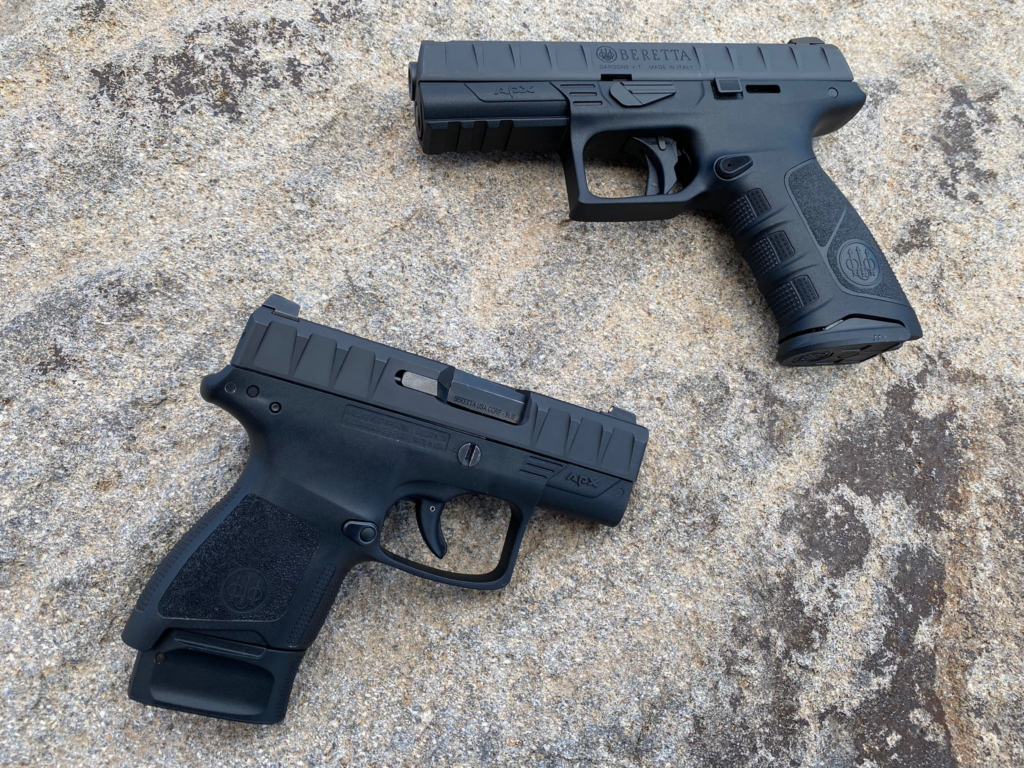
The original Beretta APX Carry “feels” as if it should have a higher capacity for its size since other slim 9mm carry guns like the Sig Sauer P365 series or even the Taurus GX4 series have really upped the ante on “clown-car” pistol capacity. In fairness, those models use a staggered column magazine while the APX Carry feeds off a true single-stack magazine.
I find that the APX Carry most resembles the original Smith & Wesson M&P Shield due to its similar height, length, width, dimensions, and round capacity. The Walther PPS M2 is also reminiscent, as this Walther handgun feeds off a single-stack magazine and is only slightly bigger than the APX Carry.
Beretta APX Carry Features
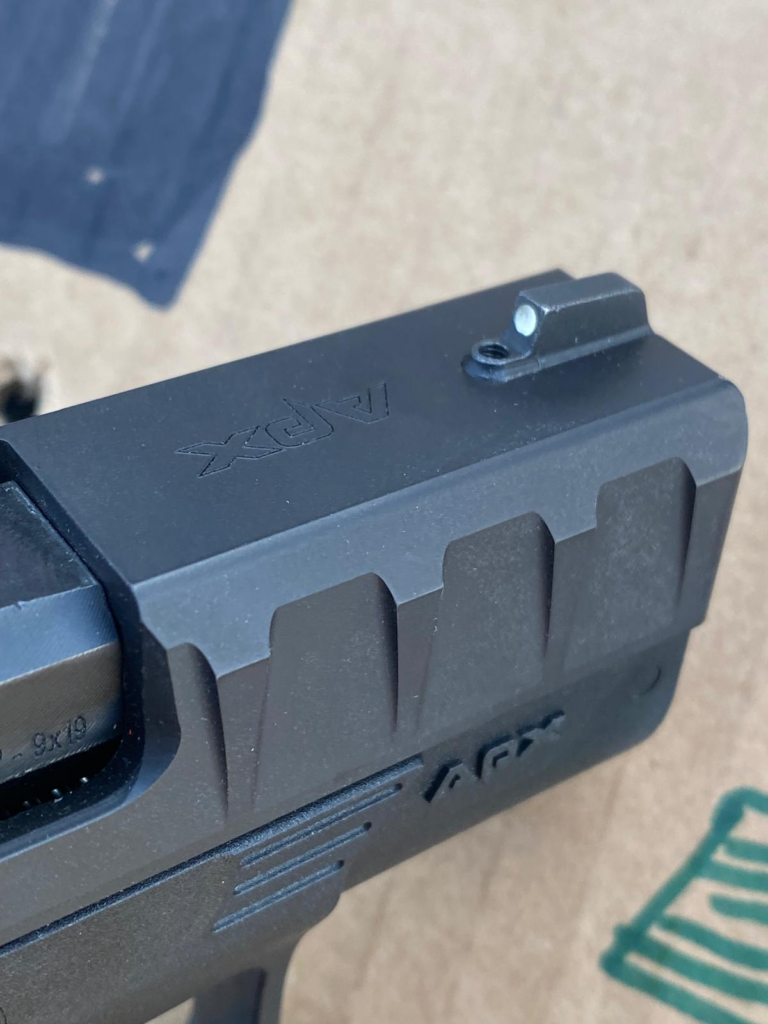
The Beretta APX Carry takes its style cues from the original standard Beretta APX duty pistol. It has the same grip angle and texturing style, not to mention the signature ribbed slide. However, its grip is quite thin and doesn’t accept interchangeable backstraps.
Like the rest of the APX family, this ultra-compact pistol uses a modular chassis similar to the Sig-Sauer P250 and P320. The encased trigger group also bears the gun’s serial number, which allows users to easily drop the unit into a frame of a different color or style to mix and match.
Beretta did a good job, including an iron-sight set consisting of a plain-and-serrated rear sight with a standard white dot up front. For a no-frills set, this combination is very hard to argue against. The only peculiarity about the front sight is that it doesn’t utilize a traditional dovetail. It has a narrow channel that lets the sight blade slide in or out from the muzzle side of the slide and is held in place by a set screw.
I wish I had the requisite trigger time with it to disclose whether this alternative sight channel is as secure as the standard horizontal dovetails found on most pistols.
Recoil Mitigation
The Beretta APX Carry weighs approximately 20 ounces, which is in line with steel-framed snub revolvers and other semi-autos in this category. Its slide seems top-heavy, and my hunch is that this gun was probably designed with a heavier slide to help dampen the harsh recoil from the combination of a three-inch barrel and the 9mm cartridge, as these types of guns don’t have the smoothest recoil impulses. Subjectively, the APX Carry does feel a little less harsh during recoil, and I’m curious as to whether that’s a result of a beefier slide.
Beretta APX Carry Magazines

Two single-stack 9mm magazines are included with the gun—an 8-round unit with a chunky extended base pad and a 6-round unit with a more compact base pad. The former’s base pad actually makes for a very comfortable firing grip and allows me to fit all three firing-hand fingers on the front strap with no issues. However, the base pad on the 6-round magazine is a little less roomy but still provides a welcome ledge for the pinky finger nonetheless.
Interestingly, the total length of the front strap with the 8-round magazine and its base pad end up being equivalent to the front straps of some compact or even full-size pistols. Personally, the last three fingers of my hand sit exactly as they do on a Beretta 92 front strap.
Part 2 (coming soon) of this write-up covers my thoughts on the Beretta APX Carry’s trigger and my remarks after shooting it.

